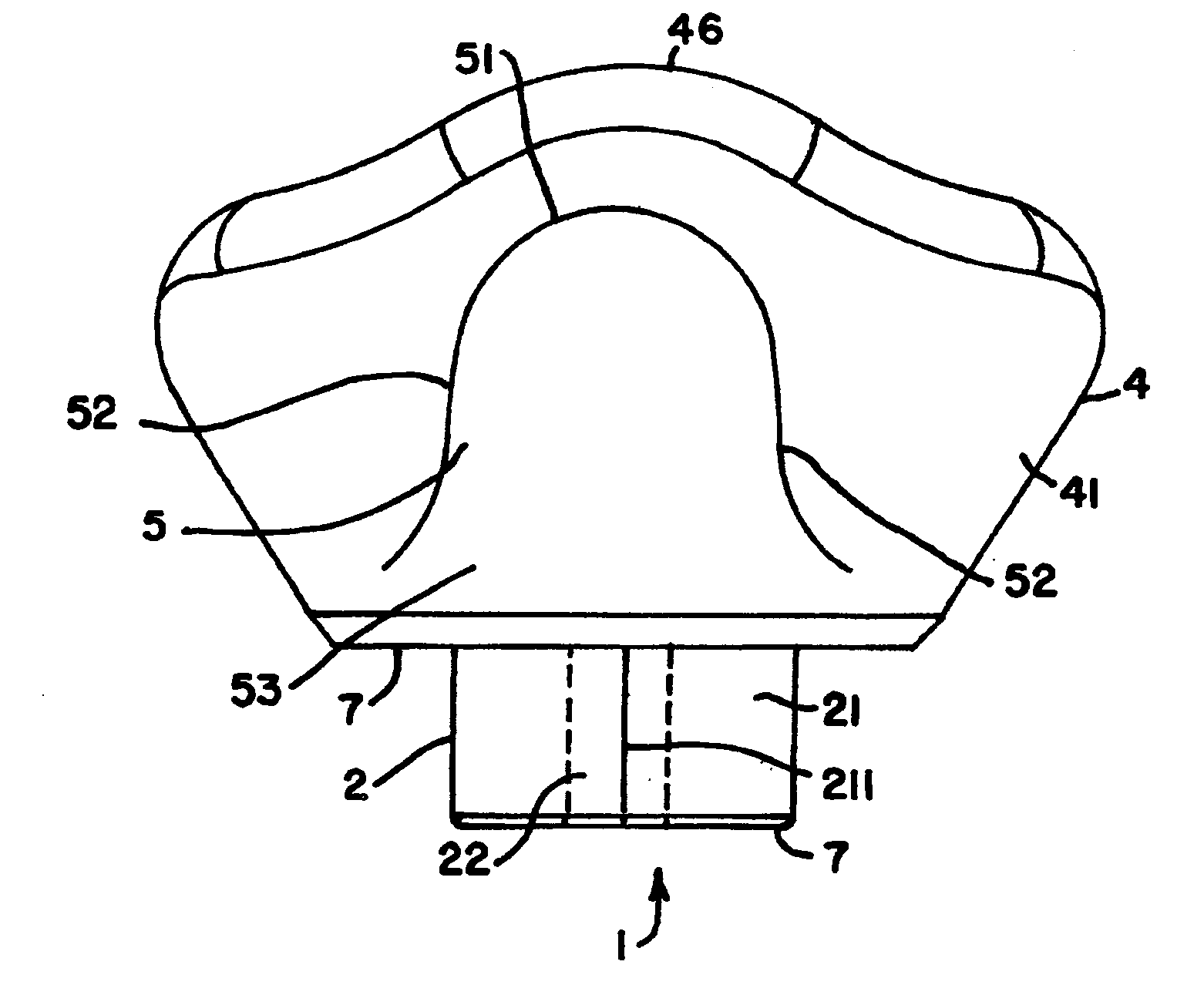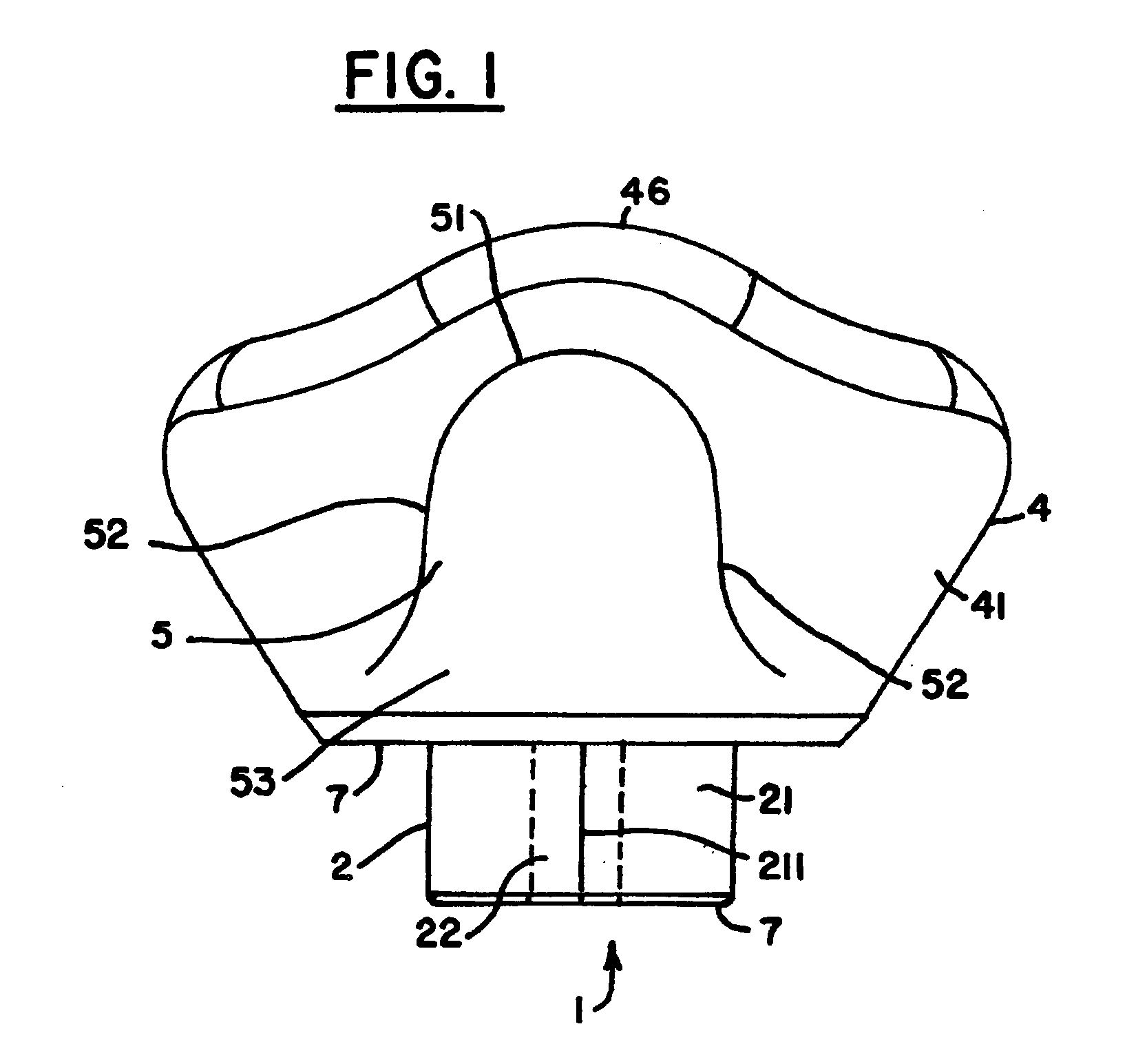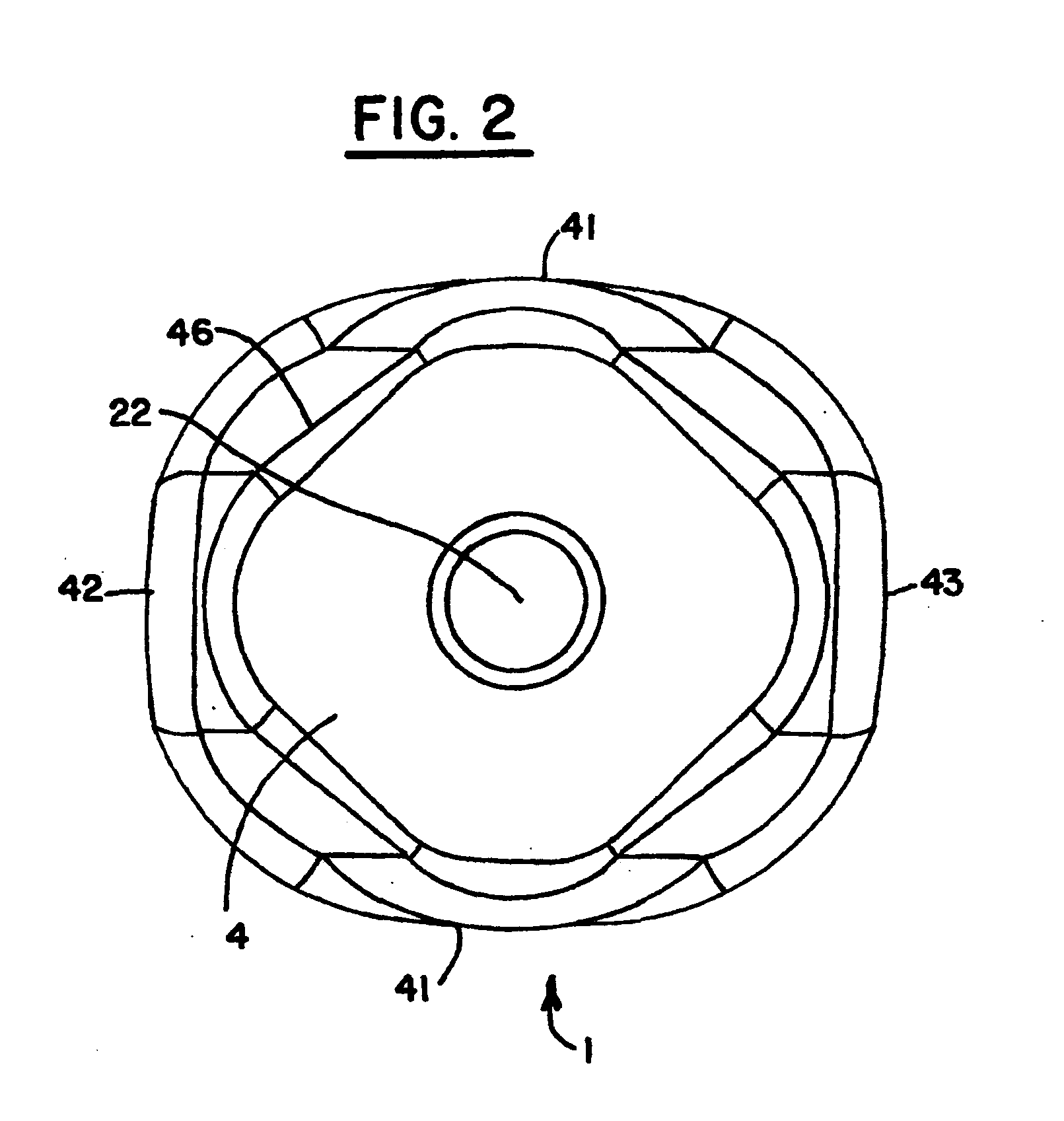Healing abutment system for bone contouring
a bone contouring and abutment technology, applied in the field of implant dentistry, can solve the problems of non-anatomical healing, difficult placement of the final crown, and maturation of the gingival tissue around a conventional circular cross-sectional (in the horizontal plane) healing collar, and achieve the effect of improving the aesthetics of conventional implant dentistry
- Summary
- Abstract
- Description
- Claims
- Application Information
AI Technical Summary
Benefits of technology
Problems solved by technology
Method used
Image
Examples
Embodiment Construction
[0040]The present invention is directed to a system for contouring bone growth at missing tooth or tooth extraction sites 100 (in FIG. 6). The environment hardware used is constituted by standard dental implants 10 as currently used in advanced implant dentistry. In the inventive system, at least a partially anatomic bone graft contouring abutment 1, as depicted in FIGS. 1-5, is attached to a standard implant 10, as depicted in FIGS. 6 and 7.
[0041]In the inventive system, the bone graft contouring abutment 1 is substituted for a conventional healing abutment. Bone graft material 30 is built up around bone graft contouring abutment 1 to help hold implant 10. Unlike conventional healing abutments, the bone graft contouring abutment of the present invention mimics at least partially, the anatomical characteristics of the extracted tooth / toothroot, at least in the horizontal plane. Accordingly, the size and shape of the bone graft contouring abutment 1 changes in accordance with the too...
PUM
 Login to View More
Login to View More Abstract
Description
Claims
Application Information
 Login to View More
Login to View More - R&D
- Intellectual Property
- Life Sciences
- Materials
- Tech Scout
- Unparalleled Data Quality
- Higher Quality Content
- 60% Fewer Hallucinations
Browse by: Latest US Patents, China's latest patents, Technical Efficacy Thesaurus, Application Domain, Technology Topic, Popular Technical Reports.
© 2025 PatSnap. All rights reserved.Legal|Privacy policy|Modern Slavery Act Transparency Statement|Sitemap|About US| Contact US: help@patsnap.com



